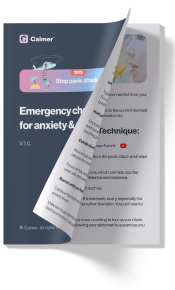Key Takeaways:
- Stay-at-home moms can feel lonely and disconnected, deepening burnout
- Prioritizing self-care isn’t selfish, it’s necessary
- Openly communicating with your partner and connecting with other moms is key
- You’re not alone and there are suitable methods that can help you overcome burnout effectively
If you’re a stay-at-home mom, you’ve definitely felt like your efforts go unnoticed. Taking care of the kids, keeping the house in order, and maybe even squeezing in some part-time work is a lot to handle.

According to research, 55% of SAHMs admit they “always” or “frequently” feel burnt out because they have too much to do, don’t get enough recognition for what they do, and often feel lonely and isolated.
So, let’s talk about why SAHM burnout is real and way harder to fix than most people think.
Why Are Stay-at-Home Moms Burning Out?
Most stay-at-home moms are stuck with their husbands working and don’t have anyone to watch their kids except them. That’s why they often have no time to take breaks despite feeling overwhelmed and exhausted.
Finding a therapist is also tough and expensive, and most husbands don’t want to spend money on help, even for a few hours a week.
Ultimately, moms are tired of being told to just take care of themselves or to let things go around the house, and the constant pressure is taking its toll.
As a former SAHD, I know all too well how being stuck at home with little adult interaction can make you feel isolated and alone.
But stay-at-home moms also have to deal with added societal expectations that they have to handle everything perfectly and without complaining.
On top of that, money worries add to the stress, too, if they’ve given up a paying job to stay home.
What Are Mom Burnout Symptoms?
Typical mom burnout symptoms include the following:
- Chronic Fatigue
- Parental Doubt and Guilt
- Increased Irritability (Mom Rage)
- Emotional Depletion
- Social Withdrawal
- Sleep/Appetite Disruption
- Difficulty Concentrating (Decision Fog)
- Physical Stress Symptoms (Headaches, Muscle Tension)
- Regretful Thoughts About Motherhood
Debunking the Myths: Why Fixing Stay-at-Home Mom Burnout Isn’t Simple
Fixing stay-at-home mom burnout isn’t simple because it’s not just about finding quick solutions.
The challenges these moms face are complex and deeply rooted in:
- Societal expectations,
- Lack of support, and
- Overwhelming responsibilities.
Studies have highlighted the immense workload that stay-at-home moms shoulder, which often exceeds that of full-time employment.
A survey conducted by the Pew Research Center found that stay-at-home mothers report spending more hours on childcare and household chores than their working counterparts do on their jobs.
This unrelenting responsibility can quickly lead to burnout as moms struggle to find time for themselves amidst their caregiving duties.
Addressing these underlying issues takes time, effort, and systemic change. Additionally, each mom’s situation is unique, so what works for one may not work for another.
Dealing with burnout isn’t easy, and you shouldn’t be discouraged or give up on the first setback you encounter.
That said, there are some things you could try.
Tips to Overcome Mom Burnout
1. Communicate openly with your partner
Definitely, the first thing you should do is talk to your partner openly about what you’re dealing with.
Share what’s tough for you, like feeling overwhelmed or lonely, so they get where you’re coming from.
When you chat about this stuff together, you’re not just complaining – you’re figuring out ways to make things better.
Ideally, they should come to the conclusion themselves that they need to help more around the house even if they’re tired when they get home after work.
They should also realize that you need breaks more often and that getting help for a couple of hours per week won’t break the bank, and it will be beneficial for the whole family.
Ultimately, working together on solutions can make a big difference and bring you closer as a team.
Men are often stubborn, so you should carefully rephrase the things you need them to do so they come across as:
- Easy-to-do,
- Less time consuming than they really are, and
- Cheap.
2. Make Self-Care a Non-Negotiable Part of Your Routine
When we had our first child, I was a stay-at-home dad until he was two. Then my wife took over.
During both those periods, we never let the other feel too much exhausted or overwhelmed. Getting some “me time” was central.
Sure, it was tough at times. Still, we made self-care a non-negotiable part of our routine as we were balancing the demands of parenting.
From taking turns watching the kids so the other could have a break or a nap to scheduling regular date nights or simply carving out a few moments each day to do something we enjoyed.
Prioritizing our well-being was essential.
3. Set Realistic Expectations
As a SAHM or SAHD, you need to set certain expectations. It’s easy to fall into the trap of trying to do it all and feeling like you’re constantly falling short.
But the truth is, nobody can do everything perfectly, and that’s okay.
Instead of aiming for perfection, focus on doing the best you can with the time and resources you have available.
Here are my two cents from my personal experience as a stay-at-home dad:
- Identify the most important tasks and responsibilities for each day and focus on completing those first
- Break larger tasks into smaller, manageable steps to make them feel less overwhelming
- Even young children can help with simple chores like putting away toys or setting the table
- Say “no” often. Without remorse
- Schedule regular breaks throughout the day and let them be known to fellow inmates, sorry family members
4. Connect with Other Moms
You simply need to connect with other moms or dads. They’re perhaps the only ones who understand the unique challenges you face day in and day out.
Connecting with them also gives you the opportunity to socialize, make new friends, and combat feelings of loneliness.
And, most importantly, they can offer valuable insights and perspectives that you haven’t considered yet.
Things like:
- Tips for managing tantrums
- Advice on nutrition, sleep routines, and managing illnesses
- New approaches to discipline and communication
- Good babysitters in the area
- Recommendations for books, apps, and activities for kids
And while I’m on the topic, Calmer is an app that can help you manage anxiety and stress as a stay-at-home mom.
It offers guided meditation sessions and relaxation exercises specifically designed to reduce stress and promote relaxation, helping you unwind and recharge.
It can also help you sleep better with the newest sleep optimization methods.
Lastly, here are some relatable things regular moms shared on Reddit:
I’m currently on maternity leave with my second child and I cannot stand being a SAHM. Don’t get me wrong, I love my children but a 2 year old who is permanently furious and stubborn to deal with, along with a 10 week old baby who just wants to be held, it is a real nightmare sometimes.
u/PubStopsOfNorwich
I honestly think I would cry tears of joy if I got to drink hot coffee, poop, and eat lunch undisturbed all in one day.
u/linksgreyhair
I’m a newly minted SAHM and I hate it. It’s stunning to me the levels of ignorance when it comes to this work, the emotional and cognitive toll it takes, and the fact that it’s never ending. If my husband hates his job, he can quit and find a new one. If my husband feels overworked, he can bring it up to his director or he can delegate. But if I’m feeling any of those things and say the quiet part out loud, I’m a shit mom according to society.
u/Neon_Black_0229
Ugh I felt this hard. The burnout is super real. And there are some aspects of being a SAHM they just don’t prepare you for. You know what I really hate? Like no one gives a fuck about you anymore. People used to ask me about my job or what was new. Now a lot don’t. They just assume it’s all kids and don’t want to discuss that ad nauseam, which okay fine, I get that.
u/wbhipster


